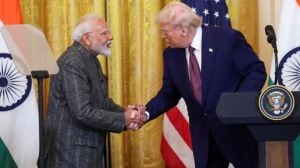Military Digest: By March 1999 there were reasonable inputs on intrusion in Kargil, says retired lieutenant general
There was an information gap of huge magnitude at the end of 1998, according to Lt Gen K H Singh, who commanded the 27 Rajput battalion during the Kargil conflict.
 Posted on YouTube on July 25, the webinar has startling comments made by Lt Gen K H Singh (retd), a former general officer commanding of 16 Corps in Jammu and Kashmir and an infantry school commandant, who commanded the 27 Rajput battalion during the Kargil conflict.
Posted on YouTube on July 25, the webinar has startling comments made by Lt Gen K H Singh (retd), a former general officer commanding of 16 Corps in Jammu and Kashmir and an infantry school commandant, who commanded the 27 Rajput battalion during the Kargil conflict.The commemoration of the 25th anniversary of the Kargil conflict has concluded at Dras in Ladakh, but new questions surrounding the events that led to intrusions by the Pakistan Army into Indian territory continue to be raised.
A webinar of retired Army officers who are part of a Lucknow-based think tank named STRIVE, posted on YouTube, has brought forward interesting details of the manner in which tell-tale signs of the intrusions were reportedly revealed much earlier than when they were actually discovered in May 1999.
Posted on YouTube on July 25, the webinar has startling comments made by Lt Gen K H Singh (retd), a former general officer commanding of 16 Corps in Jammu and Kashmir and an infantry school commandant, who commanded the 27 Rajput battalion during the Kargil conflict.
Speaking on the topic “Remembering Kargil War To Chart A Course For Future”, Lt Gen Singh revealed that he was on a helicopter sortie with Maj Gen V S Budhwar, general officer commanding of 3 Infantry Division, much earlier than May 1999 when footprints that categorically pointed towards presence of intruders were seen on snow in the Mushkoh sector.
“I also had the privilege of going on a helicopter recce with Maj Gen Budhwar, who was GOC 3 Div, and I did see footprints particularly in the Mushkoh area. Why I went with him was because my unit was also a Quick Reaction Force (QRF) battalion. So by March (1999) reasonable inputs were there that there had been some kind of an intrusion. Of what nature, we never knew,” Lt Gen Singh said in his remarks.
He goes on to say that intrusions were borne out by the fact that the footmarks were in very, very isolated areas which were completely snowbound.
Lt Gen Singh, whose battalion was deployed north of Khardung La towards Turtuk and Tyakshi, close to southern part of Siachen Glacier, said that in the second half of 1998, there were certain activities taking place across the Line of Control and the Actual Ground Position Line in that general area which were being reported. He said these activities were being reported over a period of four to five months.
“We didn’t know what was happening across but we did know that a number of visits by General Musharraf and also logistics buildup of an unusual kind. So this happened till September, October, November, December of 1998. We also had multiple inputs of information from our own intelligence sources,” he said.
The general stated that he was using the word information because as battalion commanders, they did not get it as an intelligence input. “Processed information turns into intelligence but what we got was pieces of hundreds of inputs in the form of information. In response by battalion was tasked to do patrolling of the 60-km gap between Chorbatla and Tyakshi battalion along the Ladakh range,” he said.
Lt Gen Singh said that Gen Musharraf has claimed in his book that this intensive patrolling carried out by his battalion (27 Rajput) was one of the reasons for the Kargil war. “I don’t know how far it is true,” he says.
He said that while intensified artillery shelling by the Pakistan Army took place in areas north of Khardungla and an increased buildup was seen in 1998, but it was not known for what purpose it was taking place. “In fact my battalion had also been told to be prepared for any operation in the end of 1998. So I suppose there was an information gap of a huge magnitude in the end of 1998,” he said.
Lt Gen Singh said that in April 1999 many sorties of the Pakistan Army’s Puma helicopters were seen taking place with underslung loads being carried. While the national focus was on the intrusions in Dras area like Tiger Hill and Tololing, not much was reported in the media on the intrusions that took place north of Khardung La, he said. His battalion undertook a daredevil daylight attack on Point 5770 to recapture it from Pakistanis who had occupied it.
Incidentally, Point 5770 was the same feature about which Major Manish Bhatnagar had passed on information as early as January-February 1999 pointing out intrusions by the Pakistan Army. Maj Bhatnagar, who was subsequently court-martialled and dismissed from service, has consistently maintained that his warnings about intrusions were ignored by the chain of command.
Giving his appreciation of the Kargil conflict from the perspective of a commanding officer, Lt Gen Singh said it was a “tactical victory by us but a strategic setback”.
“Decision-making at the higher levels appeared to be, in the beginning at least, to me…. as a CO I was surprised as to what kind of decisions…I felt the decision making would have been a little more prompt, a little more well considered from the point of operational effectiveness,” he said.
The general also said that in November 1998 Pakistani unmanned aerial vehicles were sighted in his sector. According to him, a commanding officer of an artillery unit had seen these UAVs but his higher commanders dismissed his reports saying he was “day dreaming” and that UAVs could not operate at those heights of 18,000 ft. “Nobody believed that Pakistan had UAVs but actually on the ground they were there,” Lt Gen Singh said.
The revelations made by the general are much in consonance with the assertions of the former Kargil Brigade commander Brig Surinder Singh that he had sounded warnings about possible Pakistani intrusions to senior officers as far back as August 1998 and that there had been enough intelligence inputs available to that effect.
It is apparent that the last word on Kargil has not yet been heard even 25 years after the war.












